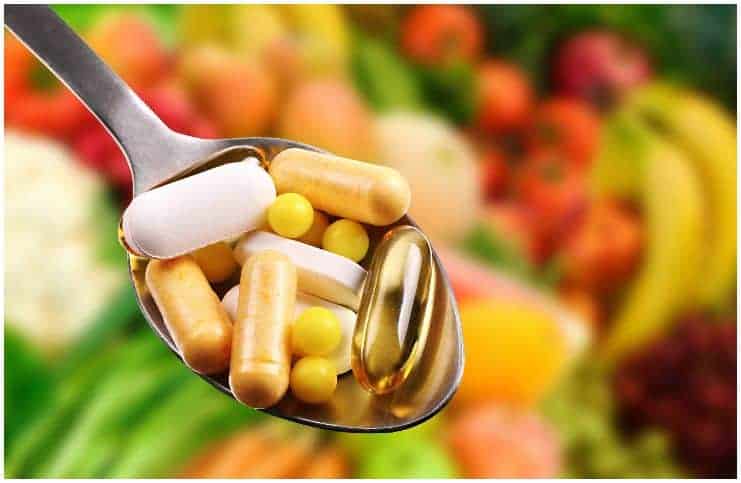Dihydroquercetin (DHQ)
Dihydroquercetin, also referred as taxifolin, belongs to the flavanone class of flavonoids, a large family of polyphenolic plant compounds.
It was discovered in 1938 by Albert Szent-Györgyi, a Hungarian biochemist. It can be usually found in the Larix sibirica, Siberian larch, Cedrus deodara, Pinus roxburghii, and Taxus chinensis. Moreover, this flavonoid can be found in the silymarin extract from the milk thistle seeds.
Benefits of Taxifolin
Antioxidant Properties
Taxifolin protects the human body’s tissues against the damage of free radicals, that are natural by-products of ongoing biochemical reactions in the human body, including normal immune system responses and metabolic processes as well as pollution or tobacco smoke.
Cancer Prevention
According to research, it has antiproliferative effects (tending to inhibit cell growth) on many types of cancer cells by inhibiting cancer cell lipogenesis. This is good news since, in 2017, there will be an estimated 1,688,780 new cancer cases diagnosed in the United States.
Reduces LDL Cholesterol Levels
Cholesterol is a waxy substance found in the blood and cells. The liver produces most of the cholesterol in the body, but the rest comes from foods you consume, especially meat, dairy products, and eggs.
If you have too much LDL and total cholesterol, it starts to build up in your arteries, leading to atherosclerosis, a condition that may cause blockages in the arteries and increases the risk of heart disease. According to studies, this antioxidant reduces LDL cholesterol levels.
Anti-inflammatory Effects
Inflammation is the human body’s natural way to self-protection, and its aim is to remove harmful stimuli, including irritants, damaged cells, and pathogens – and start the healing process. Taxifolin has potent anti-inflammatory properties that can help prevent the occurrence of chronic inflammation in the human body.
Antihistamine
Histamine is a natural component of many foods and is a compound found in all cells of the human body. Histamine is also a vital component of the neurologic and immune systems and is involved in the process of inflammation.
Too much histamine causes headaches in some people as well as feeling miserable and itchy. This occurs because some people don’t break down histamine correctly and they could develop histamine intolerance.
Acting as a powerful antihistamine, this compound reduces allergic symptoms, like – sneezing and itching.
Reduces Hypertension
High blood pressure puts extra strain on the blood vessels and heart. This can cause them to become weaker and overtime, it may lead to serious health problems. Taxifolin reduces hypertension, plus, it regulates the electrical measurement linked with activation of the heart ventricles.
Skin Health
This compound helps form collagen and may keep tendons, ligaments‚ and gums working properly. Collagen is a protein that gives your skin elasticity and strength, along with replacing dead skin cells. Actually, collagen makes about 70 percent of the protein in the skin and 30 percent of the total protein in the body.
Quercetin
It is a type of flavonoid antioxidant that is typically found in plant foods, particularly onions, oranges, tamarinds, apples, spinach, kale, tomatoes, blackberries, blueberries, currants, broccoli, cauliflower, red grapes, cherries, bilberries, sage, parsley, and St. John’s Wort.
Supplements containing quercetin have a GRAS status in the United States, and no serious side effects have yet been observed in doses of a few grams per day.
Benefits
Heart Disease Protection
Cardiovascular disease is the primary cause of death worldwide, accounting for approximately 17.3 million deaths every year. This flavonoid is an effective antioxidant that may help protect against heart disease.
Arthritis
Arthritis is an inflammation of the joints, and it can affect one joint or multiple joints. The most frequent type of arthritis is osteoarthritis. Other common rheumatic problems related to arthritis include fibromyalgia, gout, and rheumatoid arthritis.
This compound inhibits specific chemical pathways from generating inflammation. This process actually reduces the pain of this type of condition, plus, it prevents chronic inflammation.
Cancer
Studies and statistics have concluded that individuals who consume more vegetables and fruits rich in this antioxidant have a lower risk of some chronic diseases. Moreover, it is especially effective in the prevention of some types of cancer.
Reduces Inflammation
Chronic inflammation is a significant cause of numerous severe diseases including Alzheimer’s, cancer, depression, gout, and autoimmune disease. This compound has potent anti-inflammatory effects, particularly in reducing signs of inflammation within the blood, according to a 2008 study published in the medical journal “Metabolism.”
Dihydroquercetin vs Quercetin – Which Is The Most Potent Antioxidant?
Both these compounds have strong antioxidant and anti-inflammatory properties and are useful in preventing many chronic conditions, such as – type 2 diabetes Mellitus, heart disease, or cancer.
However, according to a 2009 study done at the Department of Military and Emergency Medicine, USA, DHQ was more potent antioxidant effects than quercetin. However, the latter is much more easily acquired since it is found in many fruits and vegetables.
Images credit – Shutterstock
READ THIS NEXT: Starch vs Cellulose – Differences
